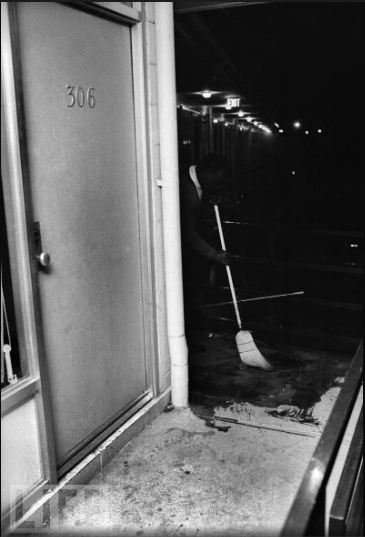It was Martin Luther King Jr. day on Monday (it's always on the 3rd monday in january), and to further celebrate this fact on LIFE.com they've got 19 galleries, truly covering King's amazing journey towards liberation of Black America. Here are some of my favourites from the demonstration in Washington in August 1963, where 200,000 blacks including King, as well as 50,000 whites, marched on the National Mall in Washington DC (where the giant marble statue of Abraham Lincoln is housed). It was the site of King's "I have a dream" speech, and it has been recognised as the turning point in the advancement of Black Rights.
The photo below was taken on 2nd July 1964, at the signing of the Civil Rights Act, the embodiment of one of the most important successes of the civil rights movement.
The tragic murder of King on April 4th 1968 (less than 4 and a half years after the assassination of President John Kennedy, who vociferously defended black rights) shocked the world, and it cannot be put into words the sorrow men and women alike felt when this horrifying event was made public. The following photos and captions are from LIFE. "On April 4, 1968, LIFE photographer Henry Groskinsky and writer Mike Silva, on assignment in Alabama, learned that Dr. Martin Luther King, Jr., had been shot at the Lorraine Motel in Memphis. They raced to the scene and there, incredibly, had unfettered access to the hotel grounds, Dr. King's room, and the surrounding area. For reasons that have been lost in the intervening years, the photographs taken that night and the next day were never published. Until now."
Dr. King's Friends Console Each Other
Ralph Abernathy and Will D. Campbell, a long-time friend and civil rights activist, embrace in Dr. King's room. "I was documenting a momentous event, and I thought that at any time I was going to be asked to leave, so I did what I could as quickly as I could."
Cleaning His Blood at the Lorraine Motel
Outside of room 306, Theatrice Bailey, the brother of the motel's owner, sweeps blood from the balcony. "I have to tell you, there was no friction with the people there at the Lorraine, even though here was this White man with a camera on the scene."
Alone After Dr. King's Death
Will D. Campbell, alone on the motel balcony, gazing out into the night. "This photograph was probably made almost as soon as we got there, because there were a lot of people milling about in the dark, and then all of a sudden it cleared up. When I saw him standing there, alone, I thought to myself, 'Wow.' This isn't a posed picture. He's in deep pain, standing there by himself, as if asking, 'My God, what has happened here?'"










